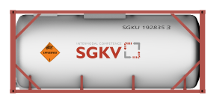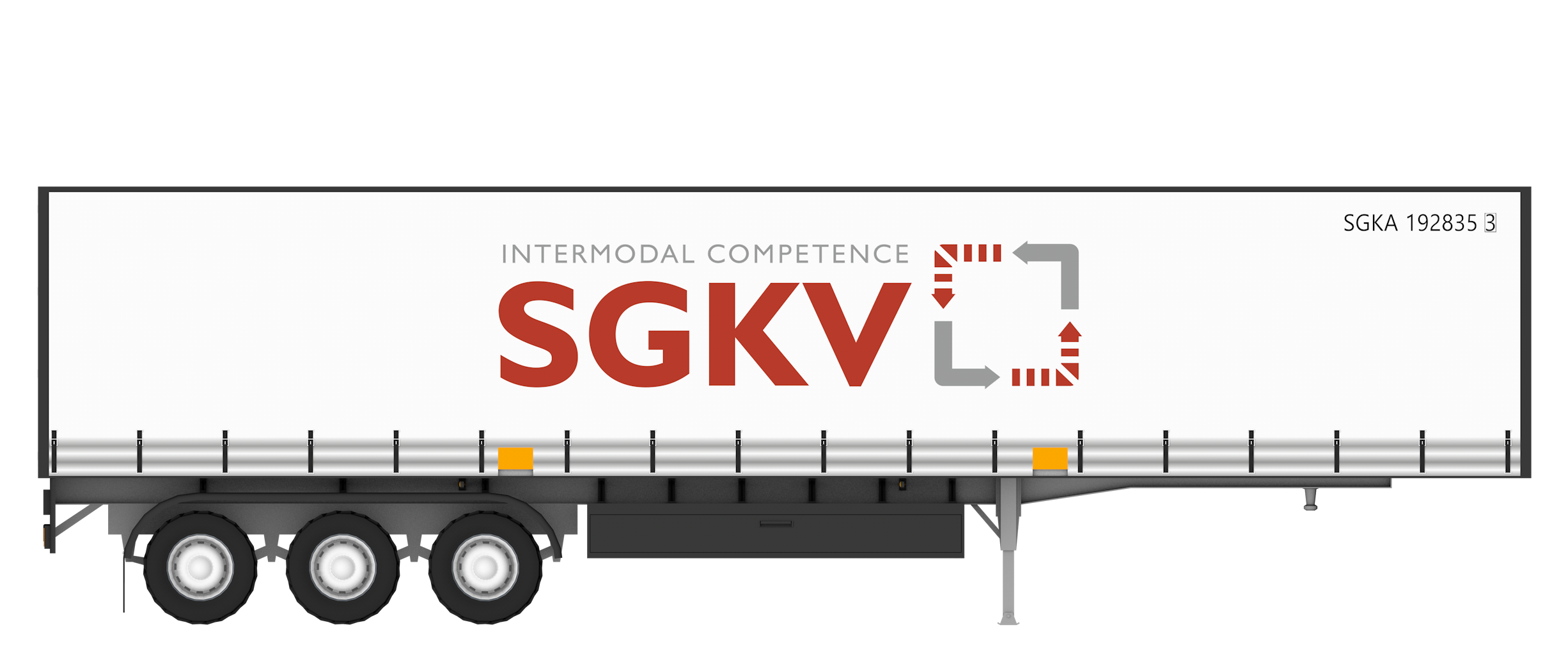Ladeeinheiten im KV (en)
GENERAL
- economically viable and easy handling
- more efficient utilization of space
- easier storage
- better options for gathering information, statistics and accounting
However, the advantages outlined above only apply if transport, handling and storage operations are generally recognized and internationally standardized.
Share of container types in KV rail / road 2017, based on the number of loading units
(Data: Destatis, Presentation: SGKV)
- In 2016 around 1.9 million containers / swap bodies (C / WB) with 30 to 40 feet were transported in rail-side combined transport; this corresponds to around 38.1% of all transported units and is the most frequently used loading unit
- Trailers and C / WB up to 20 feet follow with 18.7% and 17.9% in second and third place; This means that trailer transport replaces transport with 20-foot C / WB
Share of container types in KV Wasserstraße / Straße 2017, based on the number of loading units
(Data: Destatis, Presentation: SGKV)
- The combined transport volumes in inland shipping are dominated by 20- and 40-foot containers; together they reach 91.5% (based on the number of transported loading units) for all loading units
- In 2017, standard containers in particular were carried in waterside combined transport: 40-foot containers with 842,176 units (+ 2.6%) and 20-foot containers with 661,066 units (+ 0.9%)
Share of container types in KV rail / road 2017, based on the number of loading units
(Data: Destatis, Presentation: SGKV)
- In 2017, on average for all C / WB sizes, the proportion of empty units was 22.3%, i.e. almost a quarter of the transported C / WB were unloaded
- A significantly lower proportion of empty transport units was found for trailers with 10.2% in the reporting year
Share of container types in KV Wasserstraße / Straße 2017, based on the number of loading units
(Data: Destatis, Presentation: SGKV)
- Over 2/3 of the containers transported by inland waterway vessel were loaded in 2017; about 1/3 of the containers were accordingly unloaded
- When considering the 20 and 40 foot containers, over 45% of the containers are transported empty; that is significantly more empty container transports than in rail-side combined transport
- In the “Other C / WB” category, the share of empty container transports is even 60.3%
OVERVIEW LOADING UNITS
Within global cargo flows, several LU systems have been developed that support various types of transport and handling. These systems are characterised by maritime and continental LU, which, due to their respective use, each have different technical properties, possible applications and variations.
Examples of maritime and continental LU as well as their respective advantages and disadvantages are given below.
(Abstellung nur auf dem Boden möglich)
kontinentale EU-Ausland (z.B. China)
aus Übersee möglich (bspw. Sattelauflieger)
(Abstellung nur auf dem Boden möglich)
kontinentale EU-Ausland (z.B. China)
aus Übersee möglich (bspw. Sattelauflieger)
_____________________________________
vgl. Arnold et al. (2008), Handbuch der Logistik
vgl. Posset et al. (2014), Intermodaler Verkehr Europa




